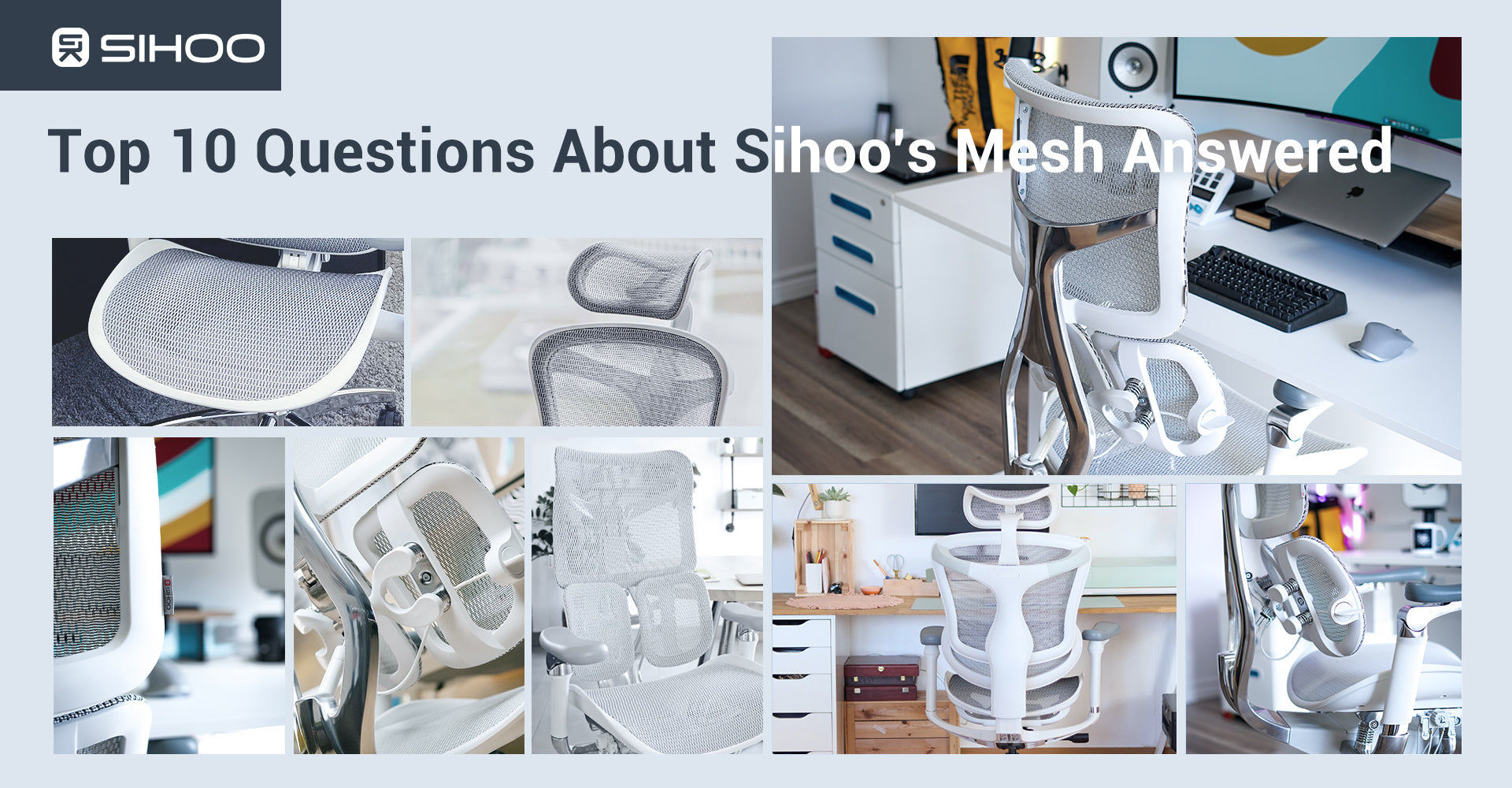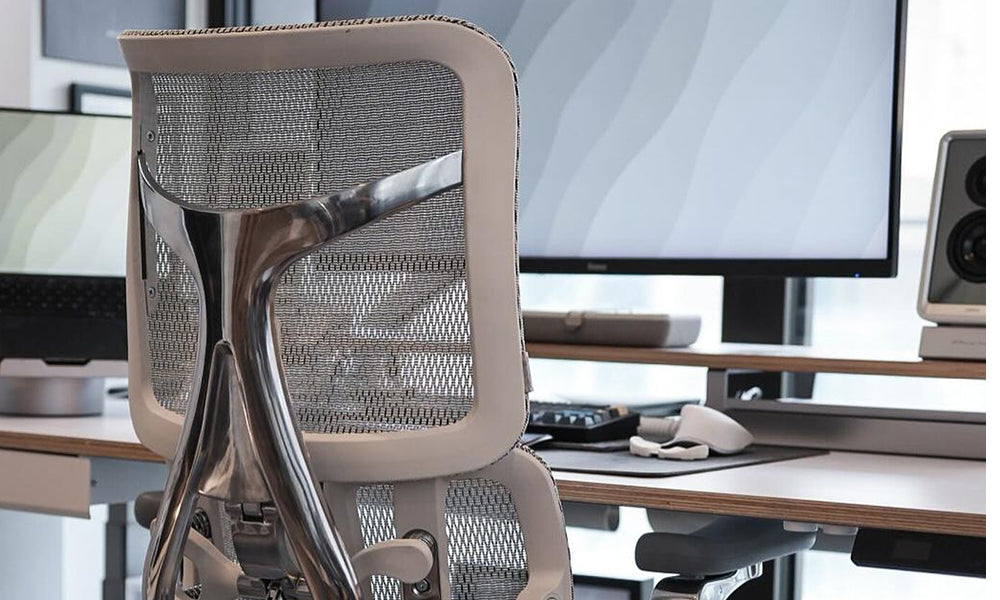When it comes to choosing the right office chair, the debate between mesh and foam seats often comes to the forefront. Both materials have their ardent supporters, and each type has its unique advantages and drawbacks. In this blog post, we'll delve into the details of mesh and foam seating, exploring their benefits, downsides, and suitability for different users and environments. By the end, you'll have a clearer understanding of which type might be the better fit for your needs.
Understanding Mesh Seats
Benefits of Mesh Seats
- Breathability: One of the most significant advantages of mesh seats is their breathability. The mesh material allows for air circulation, which helps keep the user cool, especially during long hours of sitting. This feature is particularly beneficial in warmer climates or for individuals who tend to overheat easily.
- Modern Aesthetic: Mesh chairs often have a sleek, contemporary look that appeals to modern office environments. Their minimalist design can complement various office decors and contribute to a professional appearance.
- Lightweight and Flexible: Mesh chairs are generally lighter than their foam counterparts, making them easier to move around. The flexibility of the mesh material also allows it to conform to the shape of the user's body, providing a personalized fit.
- Durability: High-quality mesh materials are resistant to wear and tear, maintaining their appearance and functionality over time. They do not compress like foam, which means they can retain their supportive properties for longer periods.
Drawbacks of Mesh Seats
- Comfort Level: While mesh can provide adequate support, some users may find it less comfortable than foam. The firm nature of mesh might not offer the same level of cushioning, which can be a drawback for those who prefer a softer seat.
- Potential for Sagging: Over time, lower-quality mesh seats may start to sag, losing their supportive structure. This can lead to discomfort and reduced ergonomic benefits.
- Limited Padding: Mesh seats typically have less padding compared to foam seats. For users who spend extended hours sitting, this lack of cushioning can result in pressure points and discomfort.
Understanding Foam Seats
Benefits of Foam Seats
- Comfort and Cushioning: Foam seats are known for their superior comfort and cushioning. The foam material provides a soft and supportive surface that can help reduce pressure on the hips and thighs, making long sitting sessions more bearable.
- Variety of Densities: Foam seats come in a range of densities, allowing users to choose a firmness level that best suits their preferences. Memory foam, for instance, offers a unique combination of softness and support, conforming to the body's shape.
- Insulation: Foam seats can provide a certain level of insulation, keeping the user warm in colder environments. This can be particularly beneficial in offices with strong air conditioning.
- Stability and Support: High-quality foam seats offer excellent stability and support, maintaining their shape and functionality over time. They are less likely to sag compared to lower-quality foam or mesh materials.
Drawbacks of Foam Seats
- Heat Retention: One of the primary disadvantages of foam seats is their tendency to retain heat. Without proper ventilation, foam can become warm, making it uncomfortable for prolonged use, especially in warm climates.
- Wear and Tear: Over time, foam seats can compress and lose their shape, leading to reduced support and comfort. This is particularly true for lower-density foams, which may break down faster.
- Heavier Weight: Foam seats are generally heavier than mesh seats, making them more cumbersome to move around. This can be a disadvantage in dynamic office environments where furniture mobility is required.
- Potential for Odor: Foam materials can sometimes develop an odor, particularly if they absorb moisture. This can be an issue in humid environments or if the seat is exposed to spills and sweat.
Choosing Between Mesh and Foam: Key
Considerations
Ergonomics and Health
When selecting an office chair, ergonomics should be a primary consideration. Both mesh and foam seats can offer ergonomic benefits, but the key is to find a chair that supports your specific needs.
- Lumbar Support: Look for chairs that provide adequate lumbar support to maintain the natural curve of your spine. Some mesh chairs come with adjustable lumbar support, while foam chairs often rely on the design of the backrest to provide this support.
- Seat Depth and Width: Ensure the seat depth and width are suitable for your body type. A seat that is too deep or too shallow can lead to discomfort and poor posture. Foam seats often offer more variety in dimensions compared to mesh seats.
- Adjustability: Regardless of the material, choose a chair with adjustable features such as seat height, armrests, and tilt mechanisms. This allows you to customize the chair to fit your body and work habits.
Comfort and Personal Preference
Comfort is subjective, and personal preference plays a significant role in determining whether a mesh or foam seat is better for you.
- Trial Period: If possible, try out both types of chairs before making a decision. Many office furniture stores offer trial periods or display models that you can test.
- Duration of Use: Consider how long you will be sitting in the chair each day. If you spend extended hours at your desk, a foam seat might provide the additional cushioning you need. Conversely, if you have shorter sitting periods or prefer a cooler seat, mesh might be the better option.
Climate and Environment
The climate and environment of your workspace can influence your choice between mesh and foam seats.
- Temperature: In warm climates, a mesh seat's breathability can help keep you cool and comfortable. In cooler environments, a foam seat's insulating properties might be more appealing.
- Humidity: If you work in a humid environment, a mesh seat may be preferable due to its breathability and reduced risk of odor buildup.
Aesthetic and Style
The visual appeal of your office chair can also impact your decision.
- Design Preferences: Mesh chairs often have a modern, minimalist design that can enhance the aesthetics of contemporary office spaces. Foam chairs, on the other hand, can range from traditional to modern styles, offering more versatility in design choices.
- Color and Material Options: Foam chairs typically come in a wider range of colors and upholstery options, allowing for greater customization to match your office decor.
Conclusion: Which is Better for You?
Ultimately, the decision between a mesh and foam seat comes down to your individual needs and preferences. Both types have their unique advantages and disadvantages, and what works best for one person may not be ideal for another.
- For Maximum Breathability: If staying cool and comfortable is your top priority, a mesh seat is likely the better choice. Its breathability and modern aesthetic make it a popular option for many users.
- For Superior Comfort: If you prioritize cushioning and support, especially for long hours of sitting, a foam seat may be more suitable. The variety of foam densities and the added insulation can provide the comfort you need.
- For Durability and Longevity: Consider the quality of the materials and construction. High-quality mesh and foam seats can both offer durability, but it's essential to invest in a chair from a reputable manufacturer.
In the end, the best way to determine the right chair for you is to evaluate your specific needs, try out different options, and choose a chair that offers the best combination of comfort, support, and style. Whether you opt for mesh or foam, the right office chair can make a significant difference in your overall comfort and productivity.






Commenta
Questo sito è protetto da hCaptcha e applica le Norme sulla privacy e i Termini di servizio di hCaptcha.